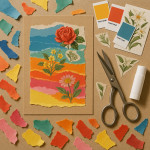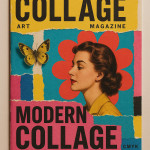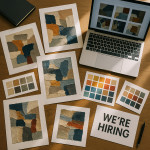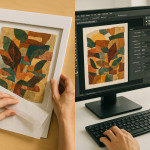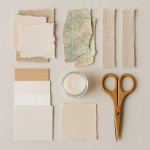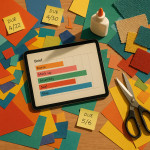AI-assisted collage workflow: merge generative textures while keeping authorship
Want to harness AI-generated textures without losing your signature style—or your copyright? This guide walks you through an end-to-end collage workflow that blends generative imagery with hand-built layers, keeps attribution crystal-clear, and delivers production-ready files that art directors love.
Why blend AI textures into collages now?
Generative models can spit out dozens of fresh surfaces—marble veins, glitch noise, vintage paper folds—in seconds. When you curate those outputs, they become raw material for faster ideation and richer visual storytelling.
- Speed: reduce texture-hunting from hours to minutes.
- Variety: explore colorways and grain patterns you might never hand-craft.
- Scalability: up-res outputs with diffusion-based tools while preserving detail.
Preparing your asset library responsibly
Source selection and licensing
Before you feed references to an AI model, confirm that each image is in the public domain or licensed for derivative works. If you commission a photographer, add a clause that allows machine-learning usage—see the usage rights checklist for more detail.
Organizing layers for fast retrieval
- Create top-level folders by material type (paper, fabric, organic, metallic).
- Add a “generated” tag in the filename to separate AI assets from hand-scanned ones.
- Embed IPTC metadata noting author, source URL, and date.
Smart naming pays off when you later build inspiring collage briefs for clients.
Training or choosing the right generative model
You can either fine-tune an open-source model on your own scans or subscribe to a commercial tool that offers licensing guarantees. Use the comparison table below to decide.
| Option | Cost | Licensing clarity | Custom look | Setup time |
|---|---|---|---|---|
| Fine-tuned Stable Diffusion | Low (GPU hours) | Depends on dataset | High | High |
| Midjourney commercial plan | Medium | License included | Medium | Low |
| Adobe Firefly | Included in CC | Enterprise-grade | Low | Low |
Step-by-step AI-assisted collage workflow
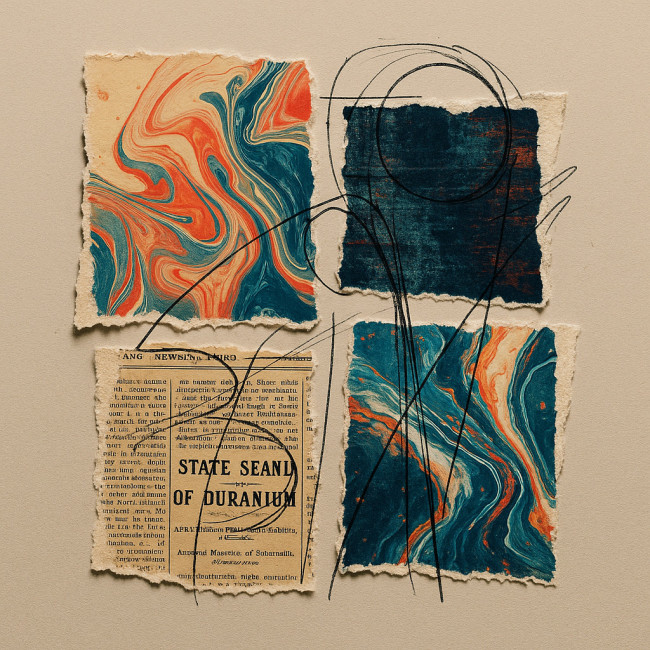
The visual above depicts a hypothetical poster-sized composition that distills every phase of the workflow into one frame. Look closely at the jagged fiber strands along the paper rim, the glitchy cyan lines melting into sepia newsprint, and the grainy shadows that indicate a real desk lamp rather than a render engine. These micro-signals embody the hybrid ethic you're striving for: machine speed plus human imperfection. By studying how color temperature shifts across the layers—warm in the analog segments, cool in the generated marble—you'll train your eye to spot areas where authorship feels weak and refine your mask work accordingly. Use the image as a mental checklist before you hit “export” on client deliverables.
- Define concept. Draft three keywords that capture tone and era.
- Prompt AI textures. Add descriptors like “hand-torn edge” or “RGB halftone.” Generate at 1024 × 1024 px minimum.
- Curate outputs. Reject anything that feels generic; keep top 10%.
- Blend in Photoshop or Affinity. Place AI texture as a smart object, add a layer mask, and reveal underlying scanned paper for authenticity.
- Apply displacement maps. Use a grayscale scan of real canvas to warp the AI layer so it inherits tactile depth.
- Audit authorship. Add a text layer off-canvas noting which elements are AI-assisted. This stays embedded in the PSD for future proof.
Keeping authorship and credit transparent
Creators lose jobs when clients fear copyright landmines. Avoid doubt by:
- Embedding XMP metadata naming you as the primary author and flagging AI contributions.
- Including a rights summary on your invoice that mirrors your contract.
- Sharing layered proofs during feedback rounds so clients see original hand-cut components.
When you publish the final piece on an experimental image designer portfolio, credit lines become searchable, reinforcing your ownership and boosting discoverability.
Need to show multiple artists on one sheet? Build a joint PDF using the print portfolio collaboration tips.
Exporting files for print & web
Print settings
- CMYK, 300 dpi, uncompressed TIFF.
- Flatten AI layers only after archiving the fully editable version.
- Add 3 mm bleed where hand-torn edges extend past trim.
Web settings
- Convert to sRGB, 72–150 ppi.
- Use WebP at 85 % quality—half the weight of JPEG with better gradients.
- Embed alt text including “AI-assisted collage texture” for SEO.
Common pitfalls and how to avoid them
Style dilution. If your collage starts to look like a Midjourney feed, you prompted too generically. Narrow references to your personal palette.
License gaps. Keep a spreadsheet of every AI prompt and resulting file to prove provenance if challenged.
Resolution mismatch. Upscale AI layers with Topaz or built-in diffusion upscalers before importing into a 6000 × 4000 px canvas.
For physical-digital projects, consult the analog vs digital handoffs guide.
Test your knowledge
FAQ
- Can I claim full copyright on a collage containing AI textures?
- Yes, if the AI output is sufficiently transformed by your creative decisions and you own a license for its use. Always document edits and maintain prompt logs.
- Do clients care whether textures are AI-generated or hand-made?
- Increasingly, yes. Transparency builds trust, and some brands have policies that mandate disclosure.
- How do I avoid a “stock” AI look?
- Feed the model custom scans of your materials, limit the prompt token length, and blend outputs with real-world shadows or physical brush scans.
Ready to elevate your next series?
Blend the speed of AI with the soul of hand-cut layers. Start today: audit your texture library, pick a model, and experiment. Your future collectors—and deadlines—will thank you.
